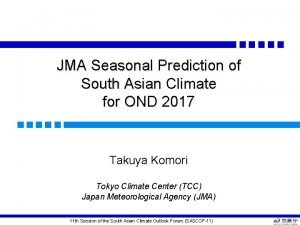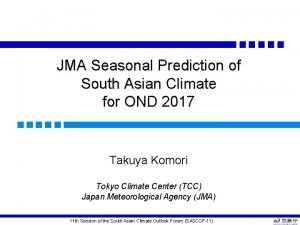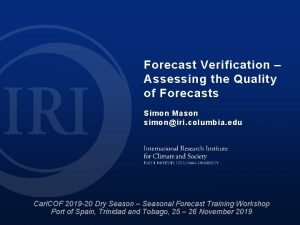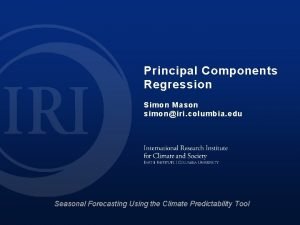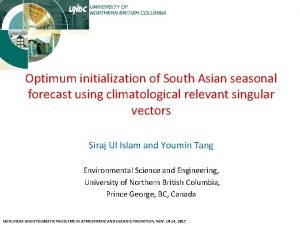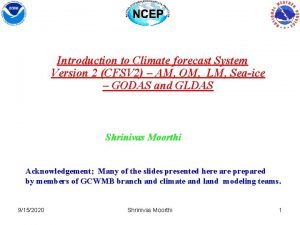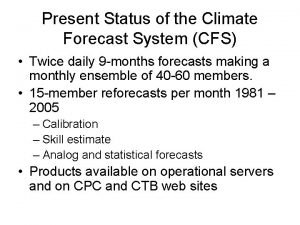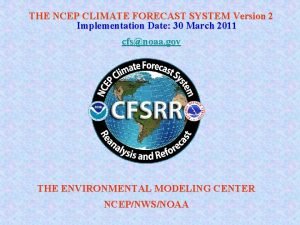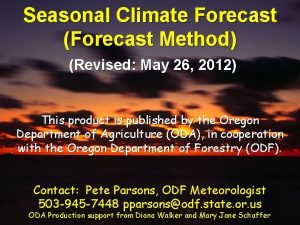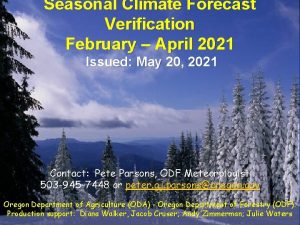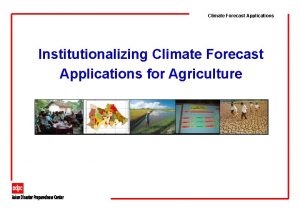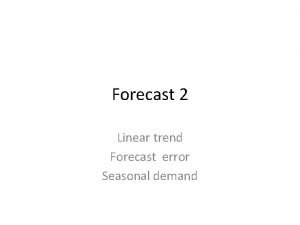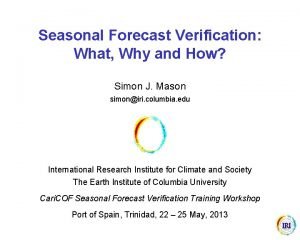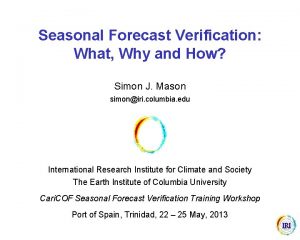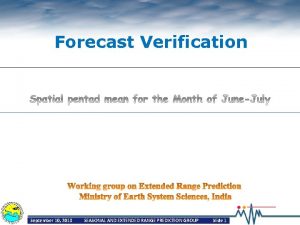Seasonal climate forecast verification 20192020 S A Dirkse









- Slides: 9

Seasonal climate forecast verification 2019/2020 S. A Dirkse

Methods • Percent of Normal • Frequency contingency table rankings

Seasonal forecast update issued 13 December 2019

• Percent of Normal verification for OND rainfall in mm OND Percent of Normal

Percent of Normal verification for JFM rainfall in mm JFM percent of normal

Frequency contingency table rankings - Verification for JFM • 38% of stations missed or false alarms • 31% hits/strikes on fist highest forecast category and 31% hits/strike on second highest forecast category.

OND rainy events Area 1: Station Berseba Received 87% or 36 mm in one day on 23 Dec the only other rainy day was during Oct where 13% or 6. 5 mm were recorded. The storm was much localized for a station with OND average of 20 mm. Area 2: The station received 6 rainy days in December and accumulated 61 mm three times the average for December. Once again very localized events. Area 3: received 72 mm in six rainy days which about four time the average of December. October was equally interesting, where within 4 days 21 mm were recorded. All this events were localized to one place. 3 2 1

Conclusion • Percent of normal analysis indicate that pockets of areas in the north-central, northwest, central and southwest received above normal rains during OND, which was not detected by climate models used during forecasting process. • Percent of normal analysis show that some parts of eastern, pockets in northcentral and extreme southern areas received above normal rainfall during JFM, which was not detected by climate models used during forecasting process. • Both techniques detected similar patterns of underestimation in the same areas predominantly. • It was demonstrated that not all rainfall events are wide spread but localized and only amplified due to limited density of observing network. • The forecasting models used mimic the rainfall patterns reasonably with the exception of areas with above normal rainfall. • The climate forecast for JFM period demonstrate the need to improve climate models, as nearly 1/3 of land area was wrongly predicted.

